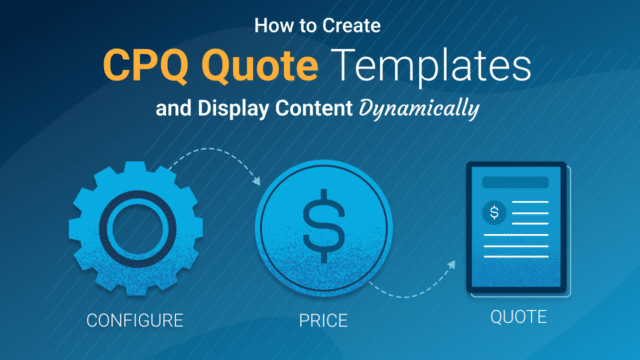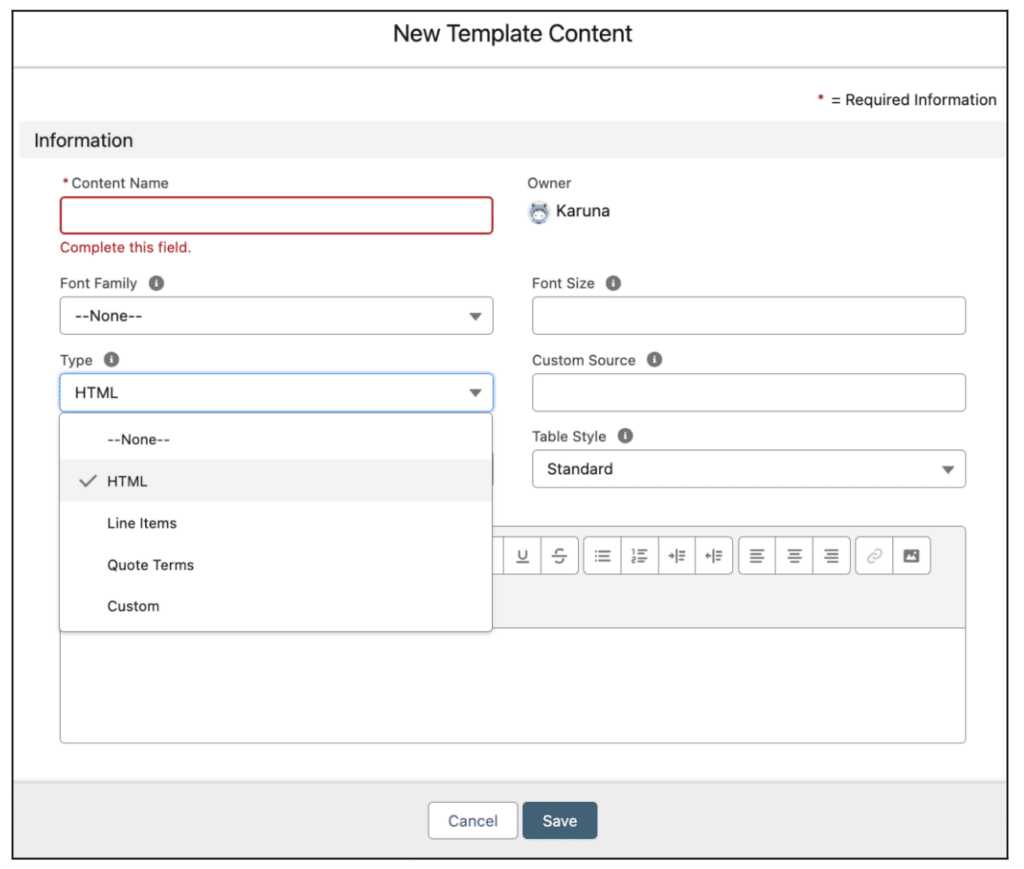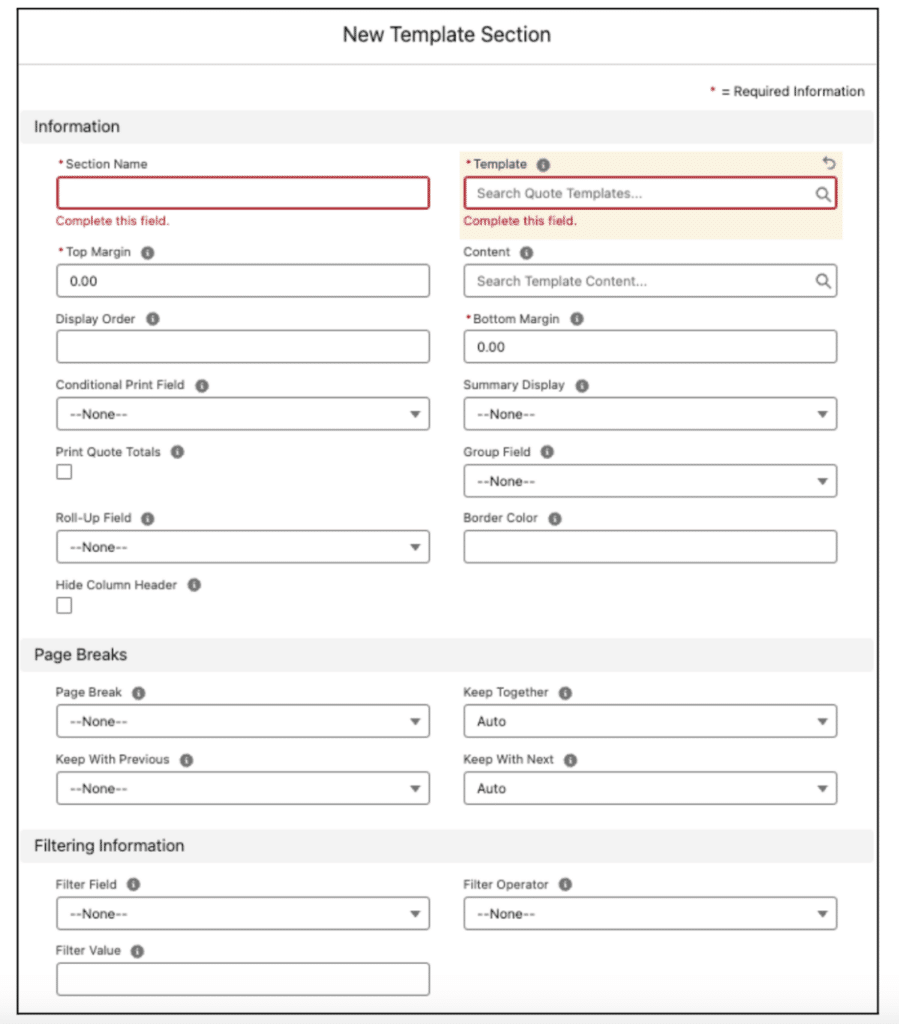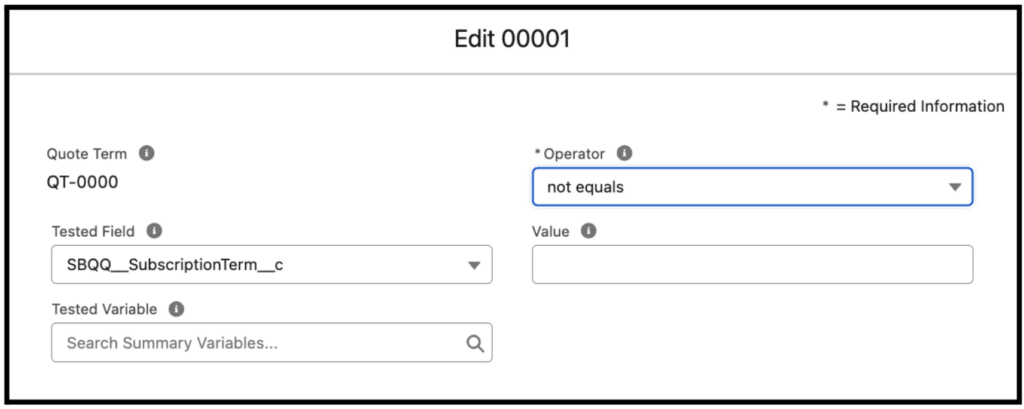After finalizing a quote, the goal is typically to create an accurate and professional quote document to customers. But without the right processes in place, quoting can be challenging, time-consuming, and prone to errors.
Thankfully, Salesforce CPQ (Configure, Price, Quote) helps with the configuration and management of quote documents, streamlining the process and making quotes more accurate. Moving beyond a standard quote document, Dynamic Quote Templates allow for even greater customization and flexibility, by helping to build personalized Quotes. These Quote Templates not only look professional, but also allow for custom branding and dynamic content to be displayed on proposal documents.
In this blog, we will take you step-by-step through how to do this within your own org.
Creating Quote Template
To create a Quote template go to:
App Launcher → Search “Quote Template” → New
The Quote Template record has different sections which you can edit to suit your organization’s needs:
- Page Information – Adjust the page height, width and margin information
- Header/Footer Information – Add Header/Footer content
- Corporate Information – Holds the company information like name, address, phone number, and email. By default, a quote template inherits its company name and address information from your organization’s settings
- Style Information – Update the font and colour of the document
- Group Style Information – If there are any groups in quote template, the font and color styling can be updated in this section
- Section Titles – Add labels to display in sections
- Print Options – Provides the options on how the document has to be displayed/printed
Creating Template Content and Template Section
Template Content: Create a template content record to store specific data or text and insert it into quote sections. When creating template content, there are several options to choose as content layouts.
- HTML – This is a combination of merge fields or formatted text that can include options like bold, bullets, fonts, etc. This uses an enhanced WYSIWYG editing toolbar to insert correct HTML tags in the content automatically
- Line Items – Here, you can create an empty row for the quote line item table. The column attributes are determined by the “Line Columns” created in the related list of the quote template.
- Custom – You can display a Visualforce page in the Custom Source field within this section of the quote template. Reference the created custom Visualforce page in the Custom Source field, enter /apex/c__MyVFPageName, replacing MyVFPageName with the name of the created Visualforce page. Note that it must be compatible with XSL-FO to work with Salesforce CPQ document output
- Quote Terms: Template Bottom – Use Salesforce CPQ’s standard bottom content for the quote template, including notes, dates, and final signature information.
- Quote Terms: Template Top – Use Salesforce CPQ’s standard top content for the quote template, including logo, street address, and ship to or bill to details. To insert an image in the Markup field, upload the file to the Documents folder and then add it as a web address. Directly uploading the image to this field is not supported.
Template Sections: Sections are blocks of information that contain a piece of template content. Create a Template Section record by navigating to the Quote Template’s related list and New section.
Display Quote Terms Conditionally: Quote term conditions are used to include or exclude a quote term and its subterms based on specific criteria. These conditions can be used on a summary variable or any quote field.
To create conditional quote terms, follow the below steps:
1. Go to the quote term where to add a display condition.
2. In the Use Conditions related list, click New Term Conditions.
3. Use the Term Condition fields to create a logical condition.
4. Salesforce CPQ evaluates this condition whenever it generates a quote document that references this quote term. If the condition evaluates to true, Salesforce CPQ includes this quote term on your quote document. You can use the following term condition fields.
5. Tested Field: Choose a quote field to evaluate your condition.
6. Tested variable: Provide a summary variable here if you want to compare your tested field against a variable.
7. Operator: Choose a logical operator when Salesforce CPQ evaluates this condition.
8. Value: If you want to compare your tested field against an absolute value, provide a value here.
Once you’ve configured your Quote Templates, you’re well positioned to take advantage of this powerful tool. Salesforce CPQ Dynamic Quote templates will help automate the generation of quotes and avoid manual errors. By creating an enhanced Quote Template, you’ll also be saving time. And the final result will be a professional, accurate quote for your team and your customers.
Want to know more about Salesforce CPQ and how we can help you? Get in touch. We’d love to chat!







